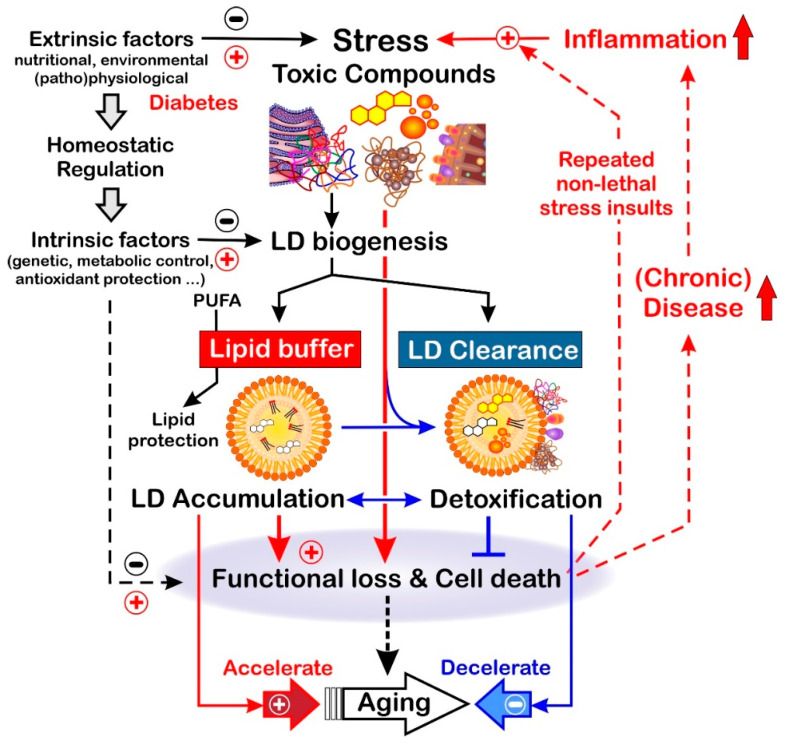Figure 3.
Model for the Janus-faced role of LDs in the aging process. Central to this explanatory approach is the bifunctional involvement of LDs in cellular maintenance, with LDs serving as both (i) a dynamic lipid /fat buffer, and (ii) a “sink” for toxic compounds upon LD clearance (proteins, lipids, and toxic compounds). In addition, LDs may also provide lipid protection by preserving PUFAs from excessive LPO and can quench stress derived from extrinsic factors. Under stress conditions, such as those created by ROS, the ER, or mitochondria, stimulation of LD biogenesis becomes the most important factor, and excessive LD formation depends on a variety of intrinsic factors (TOR, IIS, and TGF-β). The increase in the LD pool establishes a delicate balance between LD accumulation and LD-based detoxification. This balance determines the outcome of the stress response, which protects against cell death but may result in a chronic process (disease/inflammation) based on it. In contrast with the initial beneficial effects, the accumulation of LD accelerates the progression of chronic disease and thus the “aging” process. Hence, in stressed cells, LD biogenesis and LD functionality, both indirectly and directly, intervenes with multifaceted cellular life–death decisions (shaded blue area).

